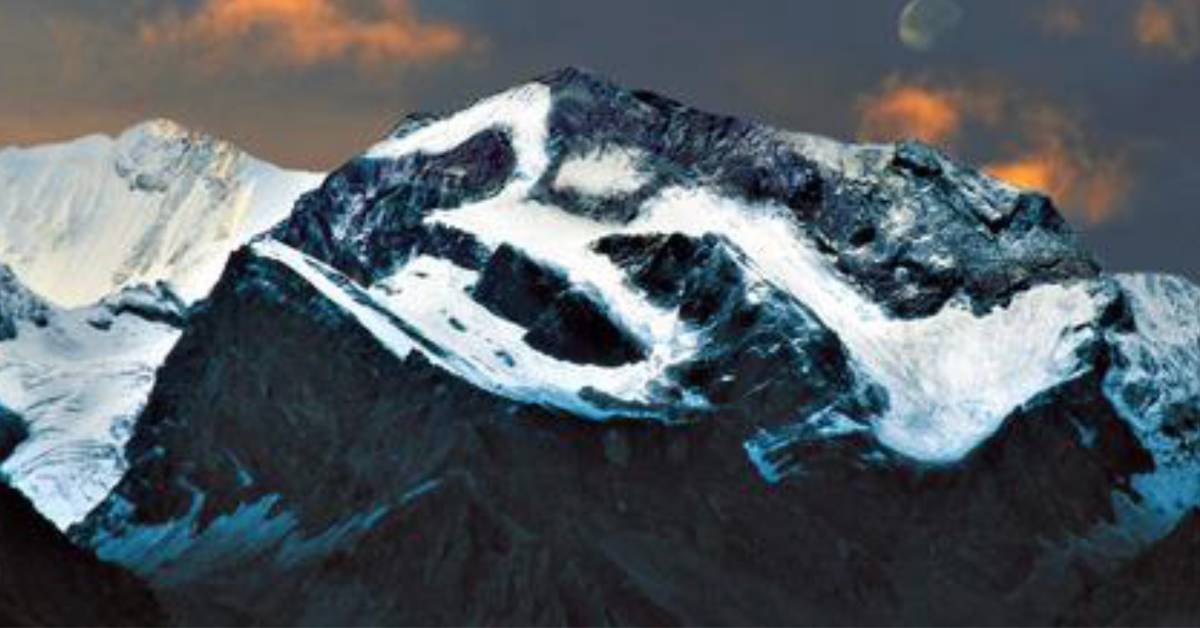Adi Kailash
Adi Kailash, also known as Chota Kailash, bears a striking resemblance to the well-known Mt. Kailash in Tibet. However, it is situated in Indian Territory, near the Indo-Tibetan border. This area boasts stunning natural beauty and a peaceful, serene atmosphere. It is an ideal destination for men and women who seek respite from the constant noise of urban life and wish to engage in introspection and inner dialogue.
At the base of Mt. Kailash lies Gauri Kund, whose waters mirror the mountain’s majestic form. In the vicinity, one can find Parvati Sarovar, also known as “Manasarovar,” albeit smaller than the original. The locals have built a temple of Lord Shiva and Mata Parvati on the banks of the Sarovar.
Following the Chinese occupation of Tibet, Indian Sadhus or pilgrims began to offer prayers to Lord Shiva at this location. They would then embark on a journey to Kutti, followed by Jyolingkong, which sits at an altitude of over 14,364 feet, to behold this sacred mountain. Upon entering this enchanting place, one cannot help but feel why the Gods chose this location as their abode.
Om Parwat
 The journey to Om Parvat begins at Gunji, where the path diverges to Kalapani, the source of the Kaali river, and then to Nabidhang, which stands at an elevation of 13,993 feet (Lipupass is only 9 kilometers away). At Nabidhang, visitors can witness a natural wonder known as “Aum Parvat.” This mountain bears an eternal inscription in snow in the shape of the sacred sound “Aum,” which represents the primordial sound and is considered the most effective symbol of God. The snow inscription is everlasting, and it is believed that the mountain itself is an incarnation of Lord Shiva, the destroyer, revealing himself in a rare glimpse.
The journey to Om Parvat begins at Gunji, where the path diverges to Kalapani, the source of the Kaali river, and then to Nabidhang, which stands at an elevation of 13,993 feet (Lipupass is only 9 kilometers away). At Nabidhang, visitors can witness a natural wonder known as “Aum Parvat.” This mountain bears an eternal inscription in snow in the shape of the sacred sound “Aum,” which represents the primordial sound and is considered the most effective symbol of God. The snow inscription is everlasting, and it is believed that the mountain itself is an incarnation of Lord Shiva, the destroyer, revealing himself in a rare glimpse.
The Adi-Kailash Om Parvat Yatra is an unforgettable journey that takes you through the magnificent snow peaks of Api, Nampha, Tinker, and Ganesha Parvat in western Nepal’s Himalayan range. You will encounter the rushing Kaliriver, dense forests, and the enchanting beauty of Chaudas, Byans, and Darma valleys, as well as traditional villages like Gala, Zipti, Budhi, Garbiyang, Napalchu, Gunji, Nabi, Rongkong, and Kutti. The path from Buddhi to Gunji passes through Chiyalekh, where you can witness the breathtaking Bugyal, full of alpine wildflowers, Himalayan herbs, and serene mountain peaks.
Throughout the journey, visitors can witness the changing moods of the snow-capped Himalayan peaks, beautiful rivers, towering peaks that seem to touch the sky, verdant meadows, and treacherous glaciers, making this area a paradise for those seeking high-adrenaline thrills.
History
Throughout history, the Uttarakhand region of the Himalayas has been a popular destination for those seeking spiritual enlightenment. Among the locals, the “Shauka” and “Rang” Garbyang, Napalchu, Gunji, Nabi, Rong-kong, and Kutti villages have a lot to share about their land. Kutti, for example, is named after Kunti, the mother of the Pandavas, who is believed to have stayed in the area for a while. According to the locals, the great sage Vyasa also lived here for an extended period and authored many books. The Bhotiyas have taken great care to preserve their cultural heritage and are always eager to showcase it through music and dance.
Jauljibi, located at the confluence of the Kali and Gori Rivers, is another popular spot. Every November, the town hosts an international trade fair called the Jauljibi Audhyogik avam Sanskritik Vikash Mela, which attracts people from across the region to conduct business and connect with one another. According to Swami Permanand Maharaj, the local deity worshipped in this region is Jwaleshwar Mahadev, who is believed to have taken the form of fire. Ved Vyasa was able to calm the raging Jwaleshwar by taking a bath at the confluence of the Gori and Kali Rivers and leaving his wooden stick behind. Goddess Jwaleshwar then instructed Ved Vyasa to install a Jwaleshwar Mahadev-Ling to pacify her. Since then, the area has been known as Jwaleshwar Mahadev.
In the 18th century, the King of Askot renamed the land Annapurna Mahadev. This site, dedicated to Lord Shiva, is located on the route to Kailash Mansarovar and the Adi Kailash Yatra.

Trekking Route for Adi Kailash and OM Parwat
DURATION: 07 Nights and 08 Days
Quick Itinerary Kathgodam to Kathgodam:
Day 1: Kathgodam to Pithoragarh 1627 meters via Jageshwar (196 km / 9-10 hrs).
Day 2: Pithoragarh to Dharchula 910 meters (96 kms / 4 to 5 hrs approx.)
Day 3: Dharchula to Gunji 3200 meters (71km / 5 to 6 hrs) via Bundi village, Chiyalakh, Garbiyang.
Day 4: Gunji to Nabhidang 4266 meters and back to Gunji via Kalapani (22+22 kms / 6 to 7 hrs).
Day 5: Gunji to Jolingkong 4378m – Adi Kailash and back to Budhi (86 kms / 9 to 10 hrs).
Day 6: Budhi (2740 meters) to Chaukauri via Dharchula (193 kms / 8 to 9 hrs).
Day 7: Chaukauri to Bhimtal (209 kms / 9 to 10 hrs) via Patalbhuvanshwer.
Day 8: Bhimtal to Kathgodam (21 kms / 45 mts).
Also Check this article:
Contact Kumaon Mandal Vikas Nigam for reservation and other updates

